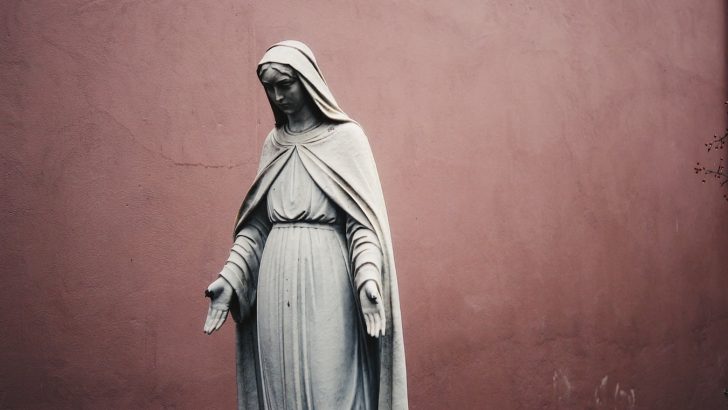Questions of Faith
It’s commonly asserted – namely from those in the Protestant tradition – that Catholics commit the sin of idolatry by worshipping statues. It’s an intriguing claim, namely because the Bible couldn’t be more explicit about the worship of graven images.
“You shall not make for yourself a graven image or any likeness of anything that is in heaven above, or that is in the earth beneath, or that is in the water under the earth: you shall not bow down to them or serve them” (Ex. 20:4–5).
It’s true that churches across the world are replete with statues and many people pray and bow down before them. So, how is a Catholic to defend this practice?
Reminder
The key is to recognise that this claim is based upon ignorance – the Church explicitly forbids the worship of false idols, which includes statues. Faithful see statues not as objects of worship, but as sources of inspiration and as reminders to pray to God. Statues, like other material items, have no intrinsic power, but merely move us to contemplate God.
Indeed, in the Bible, God frequently commands the making of statues as a means to deepen one’s Faith.
“And you shall make two cherubim of gold, of hammered work shall you make them, on the two ends of the mercy seat. Make one cherub on the one end, and one cherub on the other end; of one piece of the mercy seat shall you make the cherubim on its two ends” (Ex 25:18).
The explicit biblical command to construct statues indicates that there is no theological reason to condemn their use as a means to develop one’s relationship with God.
When it comes to statues, problems only begin to arise when people replace them in place of God. This is evident in Scripture when the Israelites direct their worship towards the golden calf at the bottom of Mount Sinai (Ex. 32). As a result of their idolatry, they received the wrath of God’s judgement.
While Protestants and Catholics could agree that constructing religious statues has biblical precedent, the issue of bowing down before statues of kissing them still remains – isn’t this a form of idolatry?
Statues, like other material items, have no intrinsic power, but merely move us to contemplate God”
Catholics hold that such acts are in no way akin to worship; kneeling down while holding a Bible doesn’t mean that one is worshipping it. In reality all of these religious images are used as theological devices to improve one’s spiritual life.
Faithful do not pray to statues, but use them as aesthetic tools to better pray to God. Any sacred art can help us venerate the saints and motivate us to ask for intercessory prayers.
In conclusion, the constructing of statues or religious art is mandated in the Bible – and while Catholics don’t pray to these material items, they can be used to remind us of a saint of the past, and move us to pray.


 Colm Fitzpatrick
Colm Fitzpatrick

